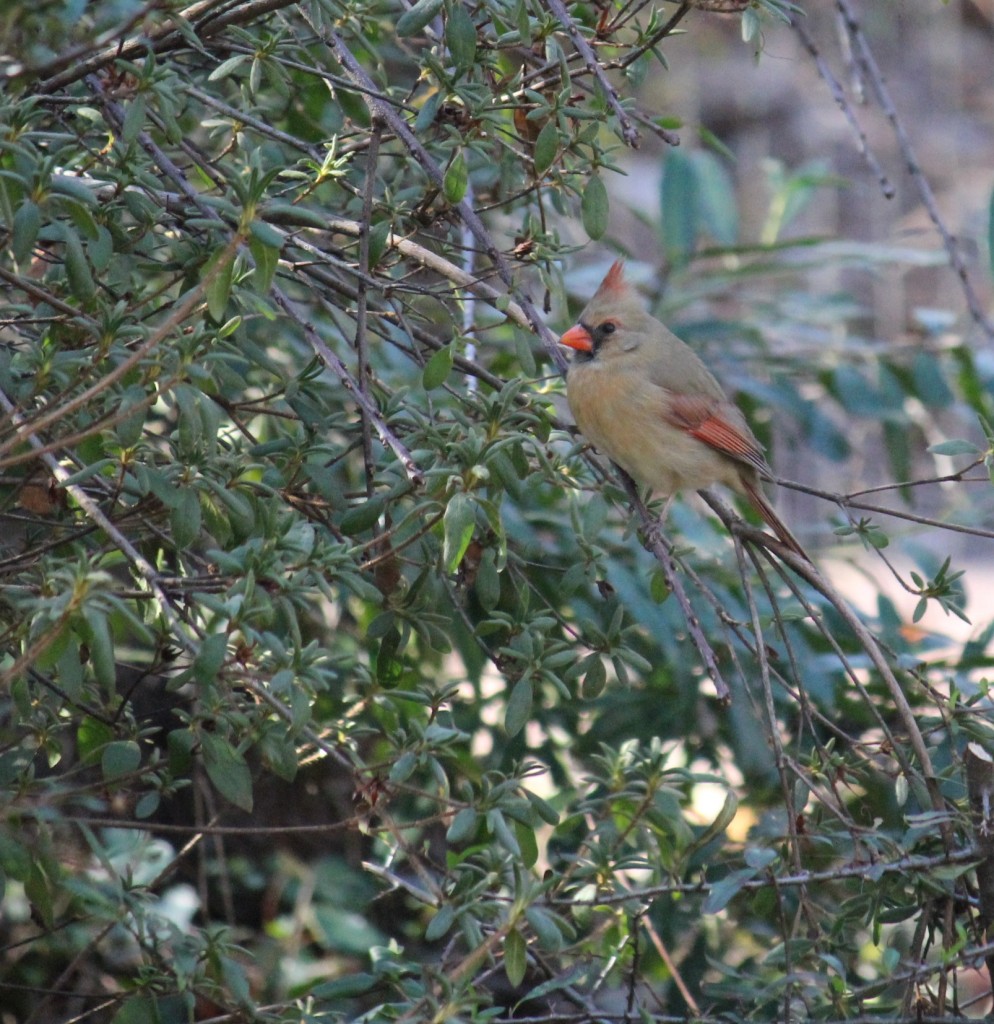
It’s not controversial to say Northern Cardinals are among the most desired backyard birds. With their vibrant red coloration, frequent trips to bird feeders and recognizable song, cardinals usually top the list of people’s favorite birds.
While birdwatching in Brooklyn’s Prospect Park the other day, I must have spotted a dozen Northern Cardinals fluttering about, particularly in a portion of the park called the Vale of Cashmere. The Vale, which is a prime birding spot, has thick woods surrounding the bowl-like area, ample water and places to find food. All of these resources are easy to mimic and provide in your backyard.
If you’re interested in attracting Northern Cardinals to your yard, here’s how.
Get a platform feeder
Unlike many other songbirds, cardinals do not like eating from small hanging feeders because they have trouble perching and they feel uncomfortable when something is unbalanced. That’s why it’s important to get a large, heavy feeder that won’t sway in the wind of move too much. Ideally, it’s best to get a large hopper feeder that is securely mounted to a pole and has a roof protecting the seed. Platform feeders are another options for cardinals.
Cardinals love seeds
The diet of cardinals actually consists of a wide variety of items, including corn, insects, tree sap and more. But, when trying to attract cardinals to your bird feeder, the best food is easily husked seeds, namely black oil sunflower seeds and safflower seeds. However, in winter months when food is harder to find, they will more readily eat things like peanuts, pieces of suet and cracked corn.
Water is key
One of the reasons so many cardinals gathered around the Vale in Prospect Park was the presence of water. Like all bird, cardinals rely on water for drinking and preening their feathers, so offering water will help attract them to your yard. Birdbaths do a great job, but since cardinals are larger than other birds, make sure the birdbath is a little deeper.

Plant shrubbery
A long-term method for attracting cardinals involves providing as much shelter and cover as possible. Even though they might be noticeable in a bland thicket of trees, they prefer seclusion and discretion.
Keep feeders filled
This one always seems like a very obvious tip, but it’s really important to keep your feeders filled, especially during the early morning and late evening. Cardinals are often the first and last to eat at feeders and if they’re empty, they won’t stick around.
Provide nesting spots
Cardinals never use the same nest, but they will reuse the same location if they really like it. They are drawn to dense areas of shrubbery with a lot of cover, so consider planting more bushes.
Make them repeat customers
Unlike other birds, cardinals don’t migrate and rarely leave a small radius of a few miles. So, once you get them hooked to your yard, they’ll be regular visitors.



3 Comments
Great post! You’re spot-on that nesting is key – I had a really hard time getting our cardinals to stay around and then we added some arborvitaes for privacy and accidentally created a home for them!
Now we have a cardinal pair year-round. I love watching them in winter since they stand out so much from the white snow 🙂
Good to hear Beverly. I’m glad you found a solution to the small perch problem.
I am a new resident of NC. A year ago, I bought a large 3 tube feeder! I placed a stick thru the perches so larger birds could land on the feeder! It worked! Had Cardinals & in the Spring, had lots of edgings. I also have a suet feeder & they learned to “hang on”!